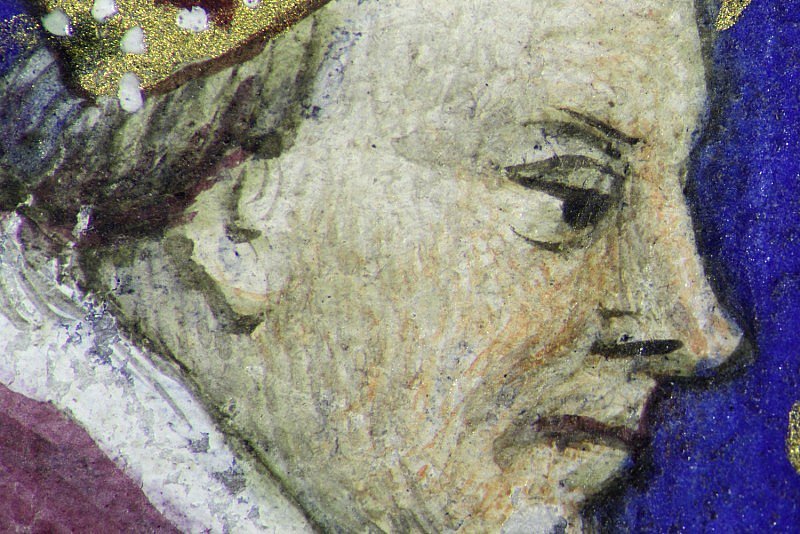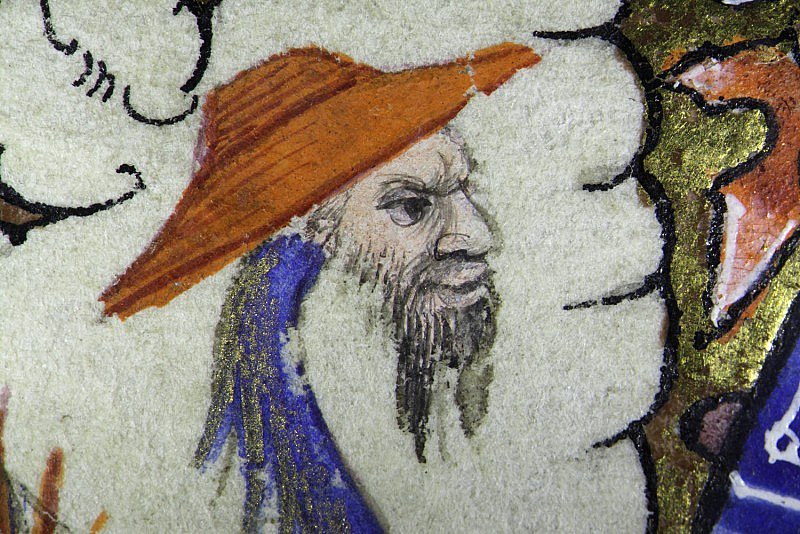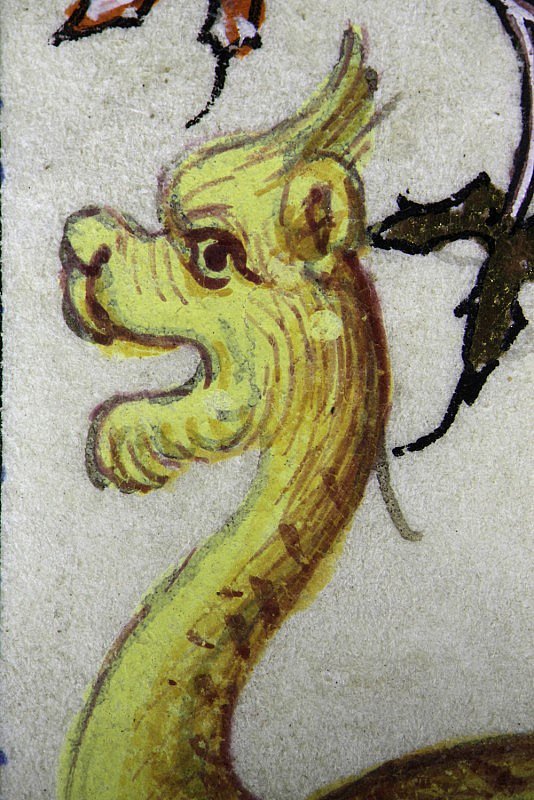Jean Corbechon, Livre des propriétés des choses
This manuscript is one of the most sumptuous surviving copies of a popular medieval encyclopaedia. Designed to provide both empirical knowledge and moral guidance, the work was widely disseminated throughout Europe.
De proprietatibus rerum (On the Properties of Things), written in Latin by Bartholomew the Englishman c. 1240, was translated into French in 1372 by Jean Corbechon, chaplain of Charles V of France (1338-1380). Corbechon produced the French version at the command of the king who was an avid bibliophile. Commissioned by Amadeus VIII, Count of Savoy (1383-1451) and grandnephew of Charles V, this spectacular copy of Corbechon’s text was illuminated by the Master of the Mazarine Hours in Paris c. 1415.
Learn more about the manuscript by exploring the sections below or selecting folios on the right. Discover further details by choosing any of the folios with the hotspot symbol ![]() .
.
The manuscript was illuminated by the Master of the Mazarine Hours and a number of assistants who painted the backgrounds of the miniatures and the minor text decoration. The richly coloured backgrounds of five of the nineteen miniatures were painted over instructions to the assistants written in Middle Dutch or German (fols. 104r, 163r, 166v, 174r, and 247v, see ‘Artists’ Materials’). The instructions reveal that the Master of the Mazarine Hours and his assistants were Northerners who had established themselves in Paris, a cosmopolitan hub of the arts and centre of courtly culture. This discovery lends material support to the stylistic and documentary evidence about the international artistic community in Paris c. 1400, which was dominated by immigrants from the Low Countries.
This manuscript was made for Amadeus VIII, Count of Savoy (1383-1451). In the modern era, the volume belonged to Brigadier-General Archibald Stirling of Keir and Cawdor (1867-1931) who gave it to the Fitzwilliam Museum in 1897.
The first book of the encyclopaedia opens with a half-page miniature of the Garden of Eden framed by a three-sided bar border, enclosed within a full vine-leaf border with zoomorphic extensions and angels. Seventeen smaller miniatures, with borders in a similar style, introduce the other books. The second book has two supplementary images, but the miniatures for Books 6, 9 and 16 are missing because the opening pages of these chapters were removed. In keeping with the pedagogical nature of the text, several of the miniatures show masters lecturing on the principles of astronomy, medicine, natural history and other disciplines. Sometimes the lessons take place in a classroom, but often the master and scholars are depicted outdoors, as if observing at first hand the natural phenomena discussed.
The Mazarine Master used a wide range of materials – minerals and organics – in pure form as well as complex mixtures. His palette includes red lead, vermilion, lead-tin yellow type I, lead white, carbon-based black and ultramarine. Lead-tin yellow was mixed with an organic colourant in some green areas, but with a copper-based pigment (possibly verdigris) in others. A red dye was mixed with lead white to obtain pink hues, and with ultramarine blue in purple areas. Grey hues were achieved by mixing lead white and carbon black. Numerous shades of brown were obtained with ochre pigments, at times mixed with umbers, vermilion and possibly with other compounds, extending the palette further. The most complex mixtures are present in the flesh tones (see Artists’ Techniques).
The burnished gold leaf in the borders was laid over a ground containing a red earth and a calcium compound, possibly chalk. The gilded halos in the miniatures, however, appear to have been laid directly over the parchment.
The design of each miniature was carefully planned by the Mazarine Master, who sketched his compositions in detail, as revealed by infrared images. Extensive underdrawing is visible in the draperies and in the landscapes, some of which were only loosely sketched and then modified at the painting stage (e.g. fols. 166v, 247v).
Infrared imaging has also revealed the presence of written instructions, currently hidden beneath the paint layers, in five of the nineteen miniatures painted by the Mazarine Master.



Jean Corbechon presenting his translation to the king of France (Dedication and Prologue)
Holding a blank scroll, the king accepts the manuscript presented to him by a kneeling Jean Corbechon who is dressed in the black Augustinian habit of his Order. The French king is seated beneath a canopy adorned with fleurs-de-lis, the emblem of the French monarchy.
Four courtiers witness the event, including Charles V’s brother, Jean de Berry (1340-1416), resplendent in a black robe trimmed with fur. Jean de Berry shared Charles V’s passion for manuscripts and was one of the greatest art patrons of all time. Although the passage of text written below the miniature names King Charles V (1338-1380) as the dedicatee, it has been suggested that the image shows, instead, his successor, Charles VI (1368-1422), who had succeeded to the throne in 1380, and during whose reign the manuscript was made. Figures in the border include an angel playing a harp, two dragons and a hybrid creature wearing a cardinal’s hat.